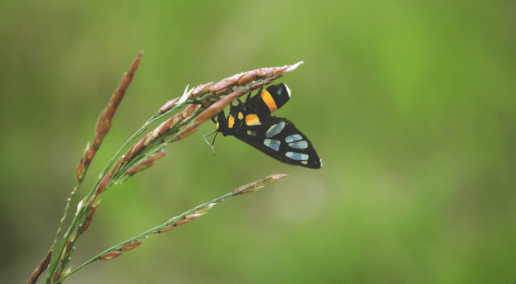During this live panel at the CFGA’s 2022 Conference, Carolyn Callaghan from the Canadian Wildlife Federation, Steve Kenyon from Greener Pastures Ranching Ltd and Tracey Ryan from Ontario Soil and Crop Improvement Association (OSCIA) discussed the question: How do we see the drive for global biodiversity protection affecting the grazing sector?
Tracey: There is an opportunity for higher biodiversity and integration and an opportunity for grazing/forage to fit a diversity of landscapes. Living Lab explores this with perennial integrations into cropping.
Steve: There is the question: Is the public going to understand what we’re doing? It has to look pretty for the public. Animals, walking in ponds, canola fields, etc. look pretty. We as an industry need it to look pretty.
Tracey: Conservation authorities, riparian zones and livestock can look unpleasant. We need to tell a story and get the message out. Livestock have a bad rap from the climate action view, but there are positive stories too. Biodiversity is a main way to tell good stories. For example, deferred grazing supports the breeding of the bobolink birds.
Carolyn: Producers of perennial crops and livestock are the all-stars of sustaining biodiversity. The real question is: Do we need to make it look pretty or do we need to educate the public on what good looks like? Perennial crops have the highest biodiversity value. These producers need to be valued and recognized. We want to see livestock producers valued for the ecosystem services they provide. Messaging is what we need to work on.
The panel also discussed additional questions:
How can we determine the most beneficial management practices (BMPs) on a given land base?
Steve: All of this is important. We need to look at the combinations. If I had to pick one, we should start with water-cycle health.
Tracey: Because this is all important and a learning continuum, we are currently struggling with the next Living Lab BMP list of 50 practices. Integrating these, with different technologies and equipment, needs to work in a producer’s system. There is not one silver bullet.
Carolyn: The Canadian Forage and Grassland Association (CFGA) is rolling out the online Habitat and Biodiversity Assessment Tool (HBAT), which looks at biodiversity BMPs available province by province. It is a system for producers to go through a checklist of what habitats they have on their land. Algorithms connect those landscapes with potential biodiversity and BMPs most suited for it.
How do we see biodiversity goals playing out in annual cropping systems?
Carolyn: This is a great opportunity for marginal land, places that lose money, have poor yield, are too wet or too steep as it has great potential to restore pollinator strips, which benefits crops. By retiring some land it will later benefit the overall yield.
Tracey: In the current Living Lab, there is ongoing research on native pollinators in field edges, hedgerows, woodlands and margins. We should not necessarily take land out of production, but instead can increase production by supporting biodiversity in these spaces. Profitability mapping is important for this. For example, land affected by flooding (from beavers etc.) can be taken out of production and used for other purposes.
Steve: The perfect piece of land has 70 per cent production, while the rest is forested and riparian that enhances crop production. Brendan, in Colorado, puts pollinator strips in potato crops, with alternative year 16 polyculture cover crops. We need to get out there and make mistakes so the next group after early adopters don’t make the same mistakes. We should highlight and learn from mistakes for everyone’s benefit.
Conference 2023
The CFGA is excited to announce that its 14th annual conference will take place Nov. 28 to Dec. 1 in person in Harrison Hot Springs, BC. This year’s conference theme is Forage Resilience in a Changing Landscape: Manage risk. Overcome challenges. Discover opportunities and we look forward to delivering the interesting and informative sessions the CFGA conference is known for. Please save the date to join us as we learn about issues facing the forage sector and how they overcome these challenges, as well as take a look ahead to opportunities. Watch the CFGA conference website for more information.
Back to Most Recent



Leave a Comment